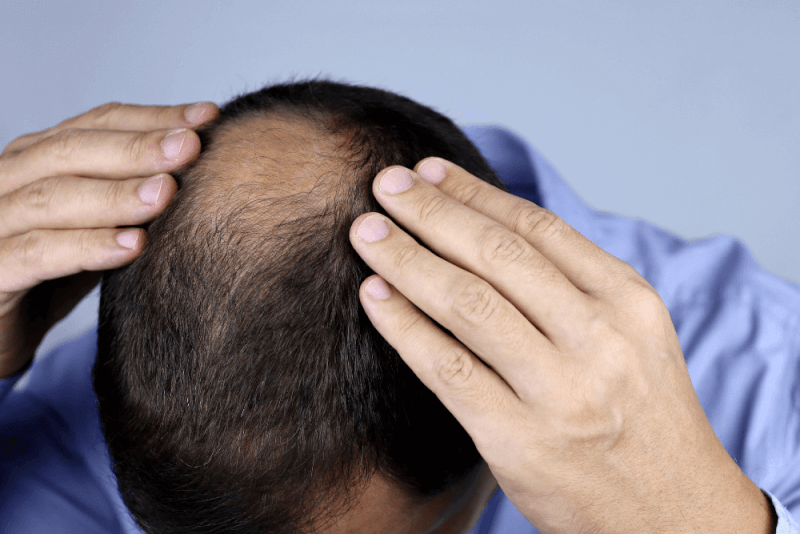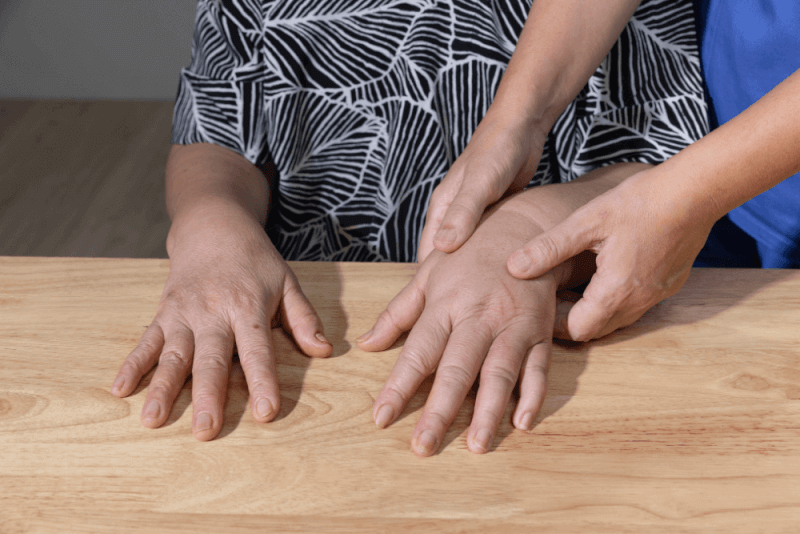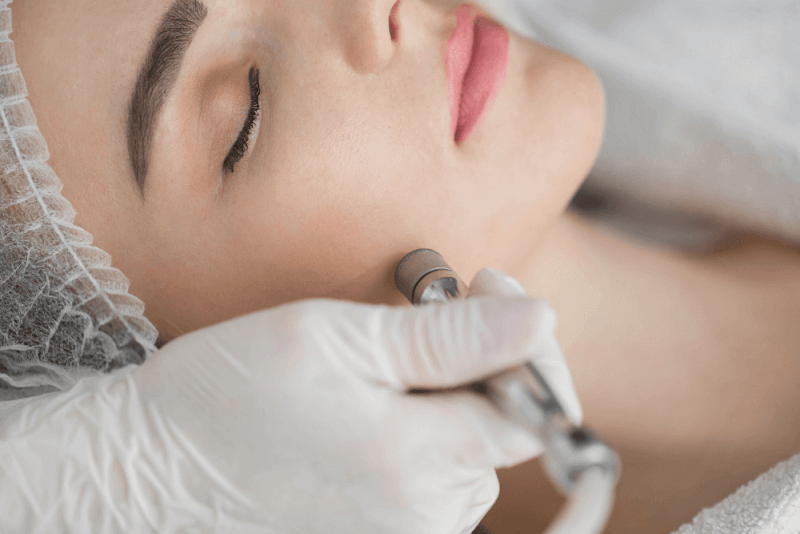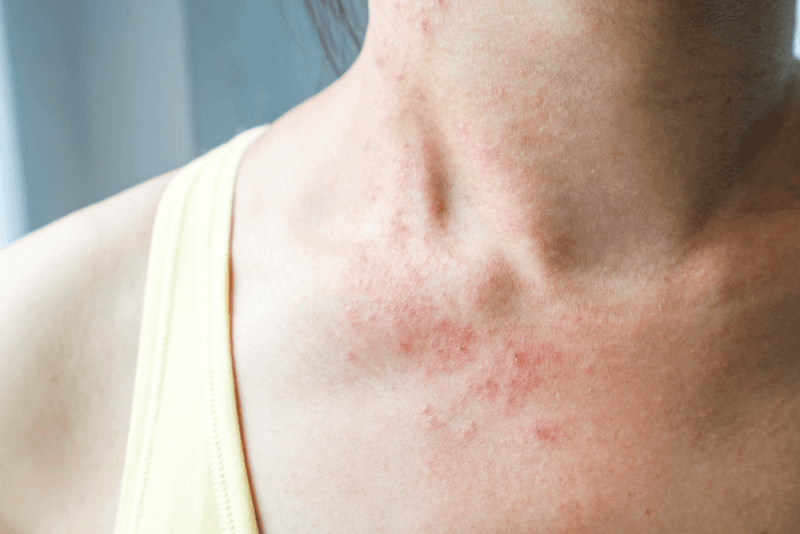What is Male Pattern Baldness?
Male pattern baldness, also known as androgenic alopecia, is a type of hair loss that affects individuals assigned male at birth. It causes the hair on the scalp to fall out and not grow back. Other signs of this type of baldness include thinning hair and a receding hairline.
Stages of Male Pattern Baldness
According to the Hamilton-Norwood scale:
- Stage 1: There is little to no hair loss or receding hairline.
- Stage 2: Slight hair loss near the skin between the ears and temples.
- Stage 3: There is a deep receding hairline around the temples, resulting in an M or U shape.
- Stage 4: There is significant receding hairline, and hair loss is seen on the top of the head.
- By Stage 5, the receding hairline connects with the bald spot on the crown.
- Stage 6: The hair between the temples and crown becomes thinner or falls out.
- Stage 7: All hair on the top of the head may be gone, or a thin band of hair remains on the sides of the head.
Factors that can contribute to male pattern baldness include age, hormones, and genetics. The likelihood of experiencing male pattern baldness increases with age.
Approximately 25% of individuals begin to experience hair loss after the age of 21, and these individuals may lose a significant amount of hair by the time they reach 50.
DHT is a type of androgen.
Androgens are responsible for functions such as facial, scalp, chest, underarm, and genital hair growth during puberty and physical maturation.
Studies have shown a connection between the hormone and the shrinkage of hair follicles. Additionally, the X chromosome inherited from the mother determines how androgens are produced, which can influence the development of male pattern baldness.
Which Vitamin Deficiencies Cause Hair Loss?
Adequate intake of vitamins, along with other nutrients, is essential for maintaining hair health. A lack of vitamins can disrupt the hair growth cycle, leading to excessive shedding and the emergence of thin and brittle hair. Comprehensive scientific research on hair loss has shown that deficiencies in certain vitamins can either cause or accelerate hair loss.
In men, the following vitamin and mineral deficiencies can lead to hair loss:
- Vitamin D
- Vitamin B6
- Vitamin B12
- Folic acid
- Magnesium
- Calcium
- Iron
- Iodine
In women, vitamin deficiencies that can lead to hair loss include:
- Vitamin B12
- Iodine
- Iron
- Vitamin D
- Calcium
Vitamin D
A deficiency in vitamin D can cause hair to become dry and more prone to breakage. It is also associated with moderate to severe hair loss. Studies have shown that low vitamin D levels may lead to premature graying of hair.
Vitamin A
A deficiency in vitamin A can lead to visible thinning of hair and an increase in daily hair shedding. Additionally, it can prolong the time it takes for hair to regrow. One of the effects of vitamin A deficiency on hair is the development of dandruff.
Vitamin E
Inadequate levels of vitamin E in the body can cause increased hair loss and thinning of the hair shafts. Other effects of vitamin E deficiency on hair include dryness and split ends.
Vitamin C
Hair changes that may occur with a deficiency in vitamin C include dryness, split ends, increased shedding, slower hair growth, and more brittle hair.
Folic Acid
Also known as vitamin B9, folic acid facilitates cell division and growth. Therefore, a lack of folic acid in the body can disrupt the rapid cell division needed by follicles for continuous hair production. This can lead to both increased hair loss and slower hair growth after shedding.
Biotin
Biotin, also known as vitamin B7, is a type of vitamin involved in enzymatic reactions in amino acid metabolism. Therefore, a deficiency in biotin can cause hair thinning and shedding.
Zinc
Zinc is important for cell growth, protein production, and providing antioxidant protection in follicles. A deficiency in zinc can disrupt the hair growth process, leading to increased hair loss and thinner hair.
Vitamin B6
Vitamin B6 plays a vital role in many biochemical and enzymatic reactions that affect hair health. A deficiency in vitamin B6 can cause hair to thin and fall out more than usual.
Iron
Iron deficiency can lead to increased daily hair shedding and slower hair growth. In advanced stages, it can cause hair shafts to thin.
Hair Loss in Babies
Hair loss in newborns and young babies is very common. Nearly all babies experience some or all of their hair falling out during the first few months of life. This is normal and expected. After hair loss, babies' hair will regrow and continue to grow.
In some cases, a baby’s hair may fall out more at the back of the head compared to other areas. This is also not a cause for concern, and the hair will start to grow back on its own within a few months.
Hair Loss in Children
There are various reasons for hair loss in children, and the causes can be significantly influenced by their age group. The causes of hair loss in children and adolescents include:
Tightly Styled Hair
Hair loss along the front, sides, and back edges of the scalp can occur when hair is pulled too tightly, such as in tightly styled ponytails or braids.
This condition is known as traction alopecia. To prevent hair loss, looser hairstyles should be used, and the scalp should avoid constant friction from hats.
Stress
Physical stress, such as high fever, hospitalization, or surgery, as well as emotional stress, such as the death of a family member, moving to a new school, or moving to a new home, can cause more hair loss than normal.
This type of hair loss, known as telogen effluvium, occurs within a few weeks or months. As a result, hair may appear thinner than before, but it does not cause bald patches or complete hair loss. This condition usually resolves on its own.
Habit of Twisting or Pulling Hair
Many children who develop this habit are unaware of what they are doing. This habit can cause hair to break and fall out, leading to patches of scalp with less hair than normal. While very young children often outgrow this habit, older children may need counseling.
Fungal Infection
Also known as ringworm of the scalp, this is a very common fungal infection. The hair shafts break and fall out, and the skin may appear irritated and scaly. Oral antifungal medications are used to treat the infection.
What Diseases Cause Hair Loss?
Hair loss can be a sign of certain diseases, as well as a side effect of treatments used to manage these diseases. The diseases that cause hair loss include:
Alopecia Areata
In this autoimmune disease, the body's immune system attacks healthy tissues, including hair follicles. This causes hair follicles to die, leading to baldness.
Hypothyroidism
Hypothyroidism occurs when the thyroid hormone is produced in lower amounts than normal. Insufficient thyroid hormone slows down metabolism, which slows the hair production process in hair follicles, leading to hair loss.
Telogen Effluvium
This is a disorder that causes hair to thin and fall out due to entering the telogen phase prematurely. Hair loss can increase to about 125 hairs per day.
Lupus
One of the most common symptoms of lupus, an autoimmune disease, is hair loss. Approximately half of lupus patients experience hair loss.
Malnutrition
People with malnutrition may experience issues with hair production and growth due to insufficient intake of vitamins and minerals. This can lead to hair loss.
Hair-Pulling Disorder
Also known as trichotillomania, hair-pulling disorder is a mental illness characterized by an irresistible urge to pull out one's own hair. Efforts to stop this urge are usually unsuccessful.
Ringworm
Commonly seen in children, ringworm is a fungal infection. Also known as tinea capitis, it affects the scalp and causes hair loss.
Anagen Effluvium
Anagen effluvium refers to the pathological loss of hair in the growth phase. It is commonly seen as a result of radiation therapy to the head and systemic chemotherapy.
Excess Androgens
In women, excess androgens can cause hair loss and baldness. Other symptoms include increased hair growth on the face, chest, or abdomen, and irregular menstrual cycles.
Medications
Blood thinners, oral contraceptives, antidepressants, anti-inflammatory drugs, beta and calcium channel blockers can cause thinning of the hair shafts.
Anemia
A lack of sufficient red blood cells in the body can prevent hair follicles from getting enough oxygen, leading to their death. This frequently results in hair loss.
Scarring Alopecia
Also known as cicatricial alopecia, scarring alopecia is a rare form of hair loss that causes hair follicles to be destroyed and scar tissue to form.
Fungal Infection
Also known as mycosis, fungal infection can occur in different parts of the body. When it affects the scalp, it can cause hair loss.
Lichen Planus
Lichen planus is a common skin disease. When it affects the scalp, it can cause hair loss.
Polycystic Ovary Syndrome (PCOS)
Polycystic ovary syndrome, the most common endocrine disorder in women of reproductive age, can cause hair loss. However, this symptom is not seen in all patients.
Pregnancy
An increase in estrogen levels, especially in the final stages of pregnancy, can cause hair loss in women.
Scalp Infection
Various scalp infections can cause hair loss. These infections can also disrupt the functioning of hair follicles and inhibit hair growth.








